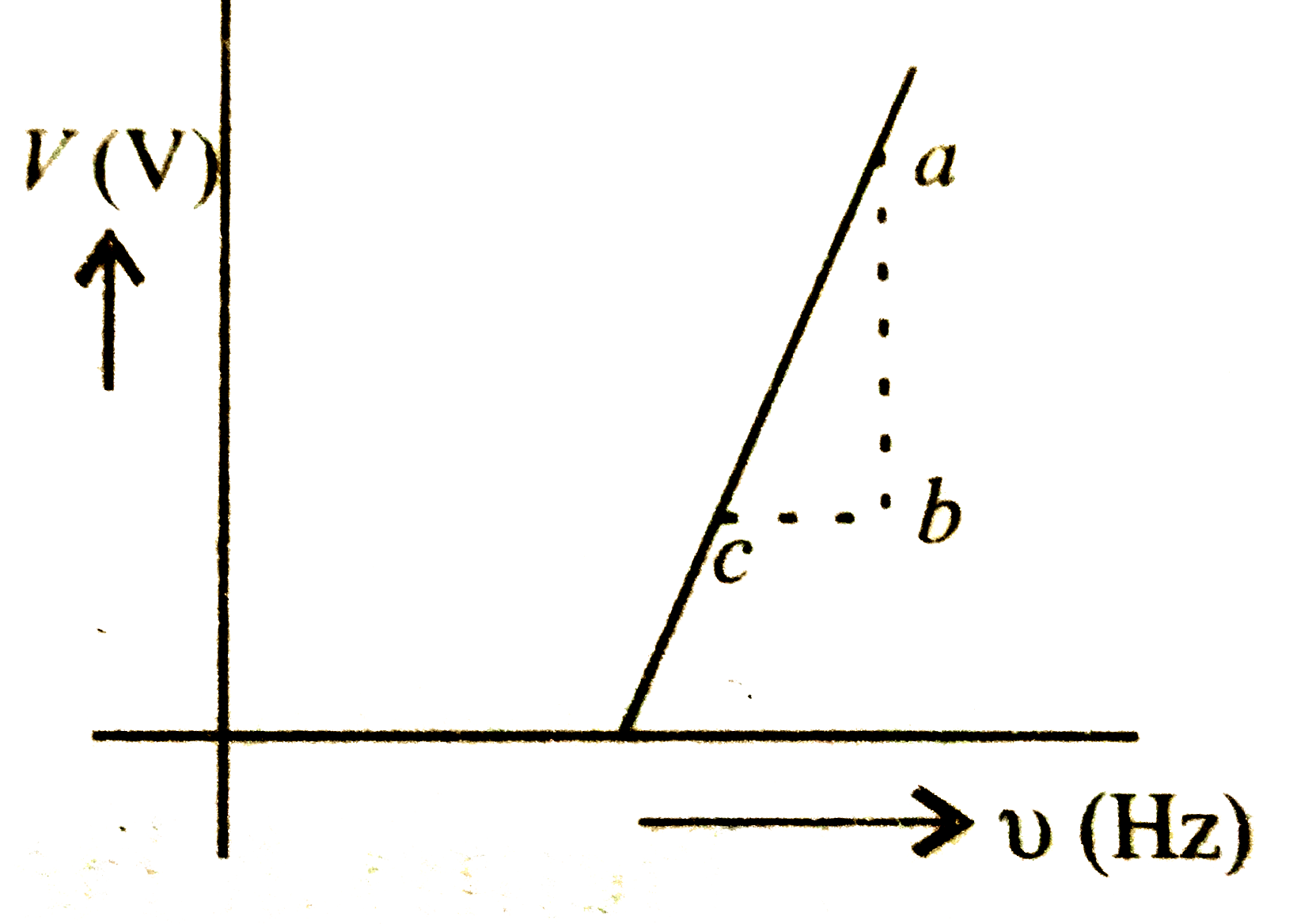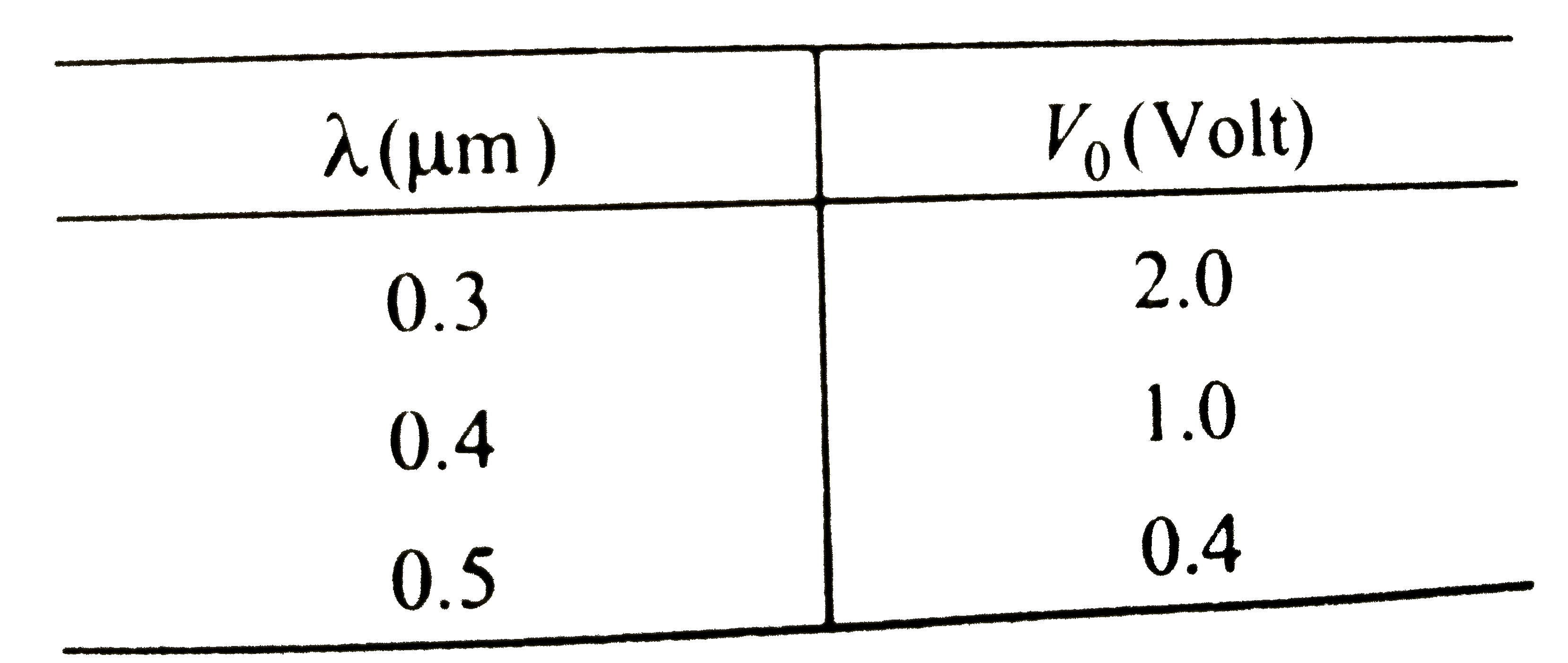In an experiment on photoelectric emission from a metallic surface ,wavelength of incident light 2×10−7 m and stopping potential is 2.5V .The threshold frequency of the metal (in Hz) approximately
(Charge of electrons e=1.6×10−19C, Planck's constant ,h=6.6×10−34J−s)
12×1015
9×1015
9×1014
12×1013
The correct Answer is:C
Step by step video, text & image solution for In an experiment on photoelectric emission from a metallic surface ,wavelength of incident light 2xx10^(-7) m and stopping potential is 2.5V .The threshold frequency of the metal (in Hz) approximately (Charge of electrons e=1.6xx10^(-19)C, Planck's constant ,h=6.6xx10^(-34)J-s) by Physics experts to help you in doubts & scoring excellent marks in Class 12 exams.
Updated on:21/07/2023Topper's Solved these Questions
Similar Questions
Find the frequency of light incident on a metal surface if the photocurrent is brought to zero by a stopping potential of 2.6V. The threshold frequency for the metal surface is 5×1014/s .
View SolutionIf the work function of a and is 3 eV, calculate the threshold wavelength of that metal.
(Velocity of light =3×108m/s Planck's constant= 6.63×10−34J−s,1eV=1.6×10−19)
View Solution
Knowledge Check
In a photoelectric experiment, the graph of frequency v of incident light (in Hz) and stopping potential V (in V) is as shown in the figure. Planck's constant is (e is the elementary charge)
 AeabbcBecbacCeacbcDeacab
AeabbcBecbacCeacbcDeacabThe maximum kinetic energy of photoelectrons ejected from a metal, when it is irradiated with radiation of frequency 2×1014s−1 is 6.63×10−20J. the threshold frequency of the metal is:
A2×1014s−1B3×1014s−1C2×10−14s−1D1×1014s−1The threshold frequency for a photosensitive metal is 3×1014Hz. The work function of the metal is approximately equal to [h=6.66×10−34Js]
A0.5×10−19 JB1.0×10−19JC1.5×10−19JD2.0×10−19J
What is the number of significant figures in Avogadro's number (6.0×1023) and Planck's constant (6.62×10−34Js).
View SolutionFind the wave number of a photon having an energy of 2.072 eV.
Given :
Charge on electron =1.6×10−19C
Velocity of light air =3×108 m/s
Planck's constant =6.63×10−34 J-s.
View SolutionWith the help of a neat labelled diagram, describe the Geiger-Marsden experiment. What is mass defect ?
The photoelectric work function for a metal surface is 2:3eV. If the light of wavelength 6800Å is incident on the surface of metal, find threshold frequency and incident frequency. will there be an emission of photoelectron or not ?
[Velocity of light c=3×108m/s, Planck's constants, h=6.63×10−34Js]
View SolutionDraw a neat and labelled energy level diagram and explain Balmer series and Bracket series of spectral lines for hydrogen atom.
The work function for a metal suface is 2.2 eV. If light of wavelength 5000 Å is incident on the surface of metal, find the threshold frequency and incident frequency. Will there be an emmission of photoelectrons or not ?
(c=3×108m/s,1eV=1.6×10−19J,h=6.63×10−34J.s.)
View SolutionIn a historical experiment to dtermine Planck's constant, a metal surface was irradiated with light of different wavelengths. The emitted photoelectron energies were measured by applying a stopping potential. The relevant data for wavelength (λ) of incident light and the corresponding stopping potential (V0) are given below

Given that c=3×108ms−1 and e=1.6×10−19C, Planck's constant (in units of J s) found from such an experiment is:
View Solution
